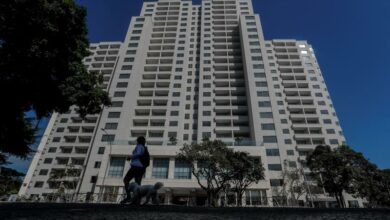Brazil’s economy contracts 0.1 pct. in 2nd quarter

Sao Paulo, Sep 1 (EFE).- Brazil’s gross domestic product was virtually unchanged in the second quarter relative to the year’s first three months, edging down 0.1 percent to remain at the level seen shortly before the onset of the Covid-19 pandemic, the IBGE statistics agency said Wednesday.
The slight drop in GDP was in line with economists’ forecasts, which ranged from a contraction of 0.3 percent to growth of 0.1 percent.
The latest numbers indicate a slowdown in the recovery of South America’s biggest economy, although Brazil is still projected to grow by as much as 5.2 percent this year and emerge from its worst one-year slump in a quarter-century – a coronavirus-triggered, 4.1-percent contraction in 2020.
Brazil’s industrial output slipped 0.2 percent between April and June, while agricultural production slid 2.8 percent relative to the first quarter due primarily to a poor coffee harvest.
“Agriculture was in the red because the coffee harvest entered into the equation. That weighed heavily in the second quarter,” the IBGE’s national accounts coordinator, Rebeca Palis, said in the report, noting that the coffee harvest is in a “negative biennial phase.”
The drop in industrial output was spurred by a 2.2 percent contraction in the transformation industry and a 0.9 percent decline in electricity, gas, water, sewage and waste management activities due to a scarcity of raw materials in production chains.
“The transformation industry was affected by a lack of inputs into production chains, as was the case in the automobile industry, which is struggling with a lack of electronic components,” Palis said, referring to the global semiconductor chip shortage.
Another cause of concern for Brazil’s economic performance in the remaining months of 2021 is a water and energy crisis that is potentially the most severe in nearly a century.
“In the electricity (sector), there was a rise in production costs due to the water crisis that made it necessary to increase the use of thermoelectric power plants,” she added.
By contrast, a key bright spot for Brazil’s economy in the second quarter was the services sector, which rose 0.7 percent compared to the January-March period. That increase was mainly driven by the recovery of two activities hard hit by the pandemic: trade and transport.
Brazil’s second-quarter GDP surged 12.4 percent compared to the April-June period of 2020, while growth in the first half of 2021 was 6.4 percent higher than in the January-June period of last year.
Those results have buoyed economists’ optimism that Brazil will grow nearly 5 percent this year, although they have lowered their projections for 2022 to a range of between 1.5 percent and 2 percent.
Among the main potential barriers to growth in the remainder of 2021, economists pointed to political tensions between President Jair Bolsonaro’s administration and the other branches of government, disparity in the recovery of different economic sectors, a high unemployment rate of 14.1 percent and a 9 percent hike in consumer prices in July, a level far higher than the government’s target inflation rate of 3.75 percent.
Concerns about inflation could lead the Central Bank to raise its benchmark interest rate, which in turn would likely have an adverse effect on the rate of Brazilian production, consumption and growth. EFE
nbo/mc





